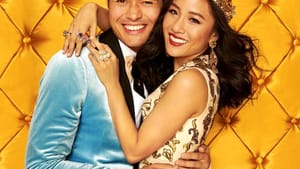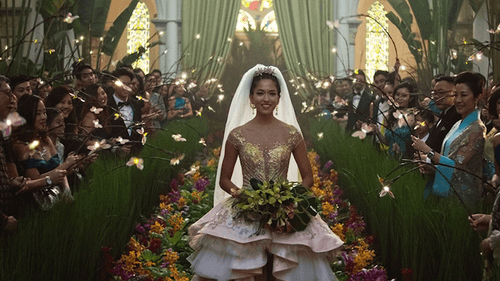Stay in the Loop
BSR publishes on a weekly schedule, with an email newsletter every Wednesday and Thursday morning. There’s no paywall, and subscribing is always free.
A big first step
The crazy importance of 'Crazy Rich Asians'

When Warner Brothers released the trailer for Crazy Rich Asians in late April, many Asian Americans were elated. The long-awaited adaptation of Kevin Kwan’s bestselling 2013 novel marks the first film with an all-Asian cast produced by a major Hollywood studio (Warner Brothers) in 25 years.
However, there has also been much speculation about whether this is actually a win for Asian Americans. Will it further perpetuate stereotypes such as the “model minority” myth?
A minority of the majority
With the exception of Constance Wu’s (Fresh Off the Boat) leading role and a couple of supporting characters played by Ken Jeong (The Hangover) and Awkwafina (Ocean’s 8), most of the cast play Asians in Asia. So, heralding this as a watershed moment in Asian American storytelling is somewhat inaccurate. This isn’t really an Asian American story, although it does have the potential to amplify a few careers, including that of American-born director Jon M. Chu and screenwriter Adele Lim.
Here's the story: After dating for a few years, Rachel (Wu) and her boyfriend Nick (Henry Golding) decide to visit his family in Singapore before taking the next step toward marriage. Unbeknownst to her, Nick’s family owns one of the wealthiest real-estate-development companies in Asia. While learning to navigate unfamiliar local customs and overcome class barriers, Rachel must prove to her would-be mother-in-law (Michelle Yeoh) that she has what it takes to keep her son happy.
Much of the criticism surrounding this film comes from its lack of diversity within Asian ethnicity and socioeconomic status. A former British Commonwealth nation, Singapore is home to diverse South Asian communities that coexist with its majority East Asian population.
That said, this story centers around a wealthy Chinese Singaporean family. In this context, the division of class and race is such that it is unlikely we would see the integration of South Asians in the family’s social circle.
I do not find the lack of diversity inherently problematic, since it is based on reality. But some non-Asian U.S. audiences might wrongly equate the scale of wealth in the film as a representation of the average Asian American/Pacific Islander (AAPI) family.

Statistics here at home
In reality, many Asian Americans live below the poverty line, even in Philadelphia. Chinese Americans represent Philadelphia’s largest Asian ethnic community, with about 33,000 residents in the city proper.
Of this population, 30 percent have attained a bachelor’s degree or higher, 33 percent live below the poverty line, 56 percent are classified as low-income, and 27 percent lack health insurance. These statistics apply to both immigrant and U.S.-born Philadelphians of Chinese descent. By comparison, within the same period of statistics taken during the 2010 census, African Americans in Philadelphia rank better in all but college-degree attainment.
Clearly, a film that projects a hyper-affluent image of Chinese Singaporeans has the potential to further misconceptions about socioeconomic diversity among Asian Americans. It also differs greatly from the lived experience of a typical Chinese American.
But one of the fundamental challenges of working with a community as diverse as the AAPI diaspora is that ultimately, no matter how hard you try, no single film will apply to all people from all places and all cultures. As a mixed-race Japanese American whose family immigrated to the United States in the 1920s, very little of Crazy Rich Asians applies to my family’s immigrant experience or my own reality. But while the film in no way compares to the groundbreaking empowerment of Black Panther, it does have the potential to set a box-office precedent for future Asian-led movies.
In a perfect world, there wouldn’t be so much riding on the success of a single rom-com. However, the quickest way to create space for the multitude of Asian experiences is for this particular film to become a box-office success. Unfortunately, unless Asian Americans — as a community — can prove that we value our stories, it is unlikely that studios will support other Asian American projects with a similar or greater budget anytime soon.
What, When, Where
Crazy Rich Asians. Directed by Jon M. Chu, written by Adele Lim and Peter Chiarelli, based on the novel by Kevin Kwan. Opens in wide release August 17, 2018. More information here.
Sign up for our newsletter
All of the week's new articles, all in one place. Sign up for the free weekly BSR newsletters, and don't miss a conversation.

 Rob Buscher
Rob Buscher